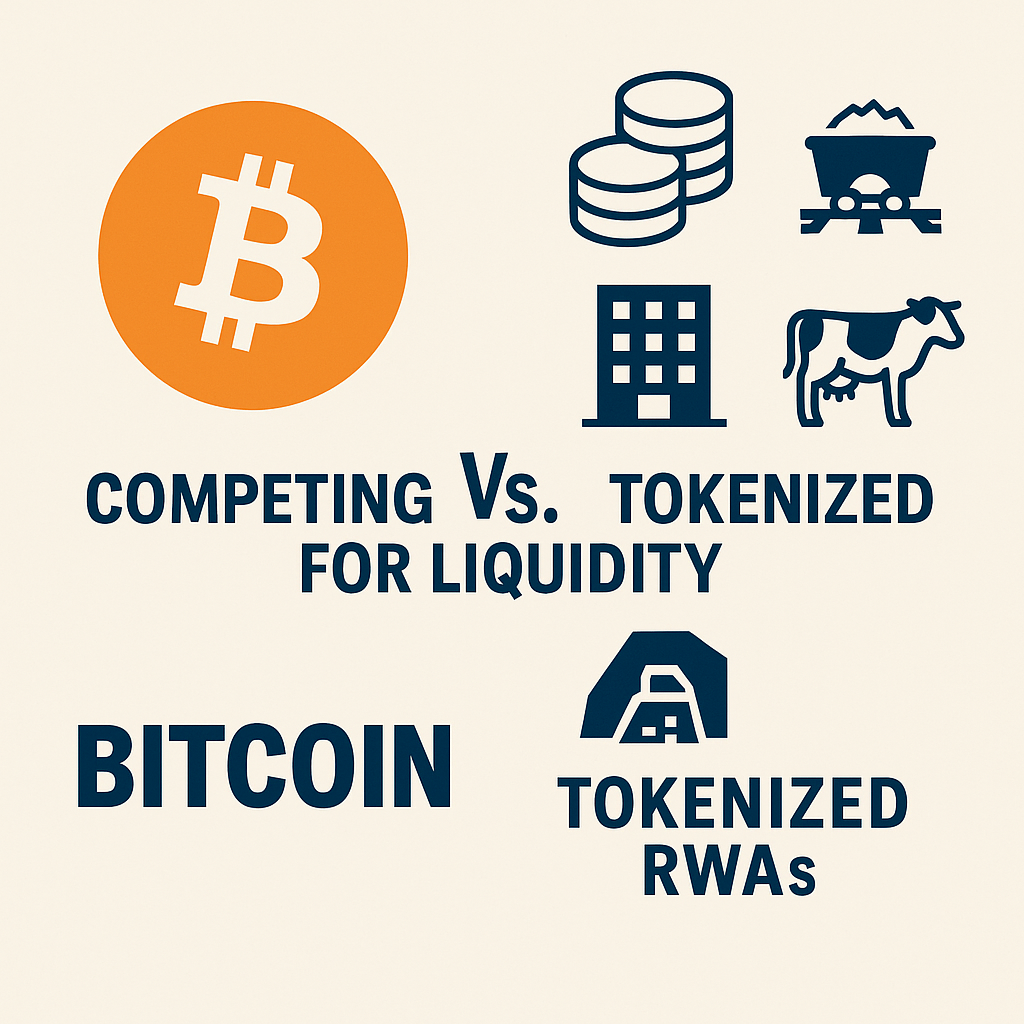RWAs will revolutionize capital markets.
For years, Bitcoin has been the undisputed heavyweight of digital assets. It has no CEO, no headquarters, no dilution of its 21 million hard cap. It was digital scarcity incarnate—a vault in cyberspace immune to central banks and politicians. But the next epoch of blockchain innovation is not only about digital scarcity. It’s about digital abundance.
Tokenization is about to rewire capital markets at the DNA level. Gold mines, skyscrapers, cattle herds, solar farms—assets once locked in illiquid silos will be broken down into tradeable, programmable tokens. This shift won’t just add a few more coins to CoinMarketCap. It will unlock trillions of dollars of value that were previously fenced off from retail and global investors.
And here’s the rub: when those assets step onto the blockchain stage, Bitcoin will no longer be the only store of value in the room.
The End of Digital Monopoly
Until now, Bitcoin’s “hard money” narrative has thrived because there was no rival in the same format. You couldn’t easily buy a fraction of a commercial building or a kilogram of copper on-chain. If you wanted something both scarce and digital, Bitcoin was the default answer.
But once every real-world asset (RWA) is tokenized, investors will face a new menu. Why hold a non-yielding store of value when you can hold tokenized gold that pays staking rewards, or real estate tokens streaming rent in real time? Liquidity will no longer be a one-way river flowing into Bitcoin. It will be an archipelago of competing islands, and Bitcoin must prove it deserves its place among them.
Bitcoin’s Competitive Edge—And Its Weakness
Bitcoin will still shine where its strengths are irreplaceable:
- Fixed supply—no tokenized mine can change Bitcoin’s 21 million cap.
- Censorship resistance—a gold mine can be nationalized; Bitcoin cannot.
- Global portability—nothing moves cross-border as freely as Bitcoin.
But its weakness becomes clear in this new tokenized market. Bitcoin does not produce yield. It is not a productive asset. It is a claim on trustless scarcity, nothing more.
When a pension fund CIO or sovereign wealth manager scans the tokenized universe, Bitcoin will compete directly against tokenized commodities, equities, and infrastructure. Its liquidity must be earned in that contest, not assumed.
The Rewiring of Capital Markets
Tokenization changes more than investment portfolios—it changes the plumbing of finance itself. Liquidity that once had to squeeze through narrow pipes (investment banks, brokers, custodians) will flow in real time, peer-to-peer, across blockchains.
Capital markets become continuous, borderless, and composable. Smart contracts can collateralize tokenized copper against loans, spin yield out of carbon credits, or package cattle NFTs into securitized bonds. In this context, Bitcoin’s role is reframed. No longer the singular gateway to “digital value,” it becomes one instrument in a vastly larger financial orchestra.
The Future: Symbiosis or Squeeze?
There are two futures to imagine:
- Symbiosis: Bitcoin becomes the base settlement asset, the “hard collateral” against which tokenized RWAs are issued. In this world, Bitcoin is the monetary bedrock, and RWAs are the skyscrapers built on top.
- Squeeze: Investors favor yield-bearing RWAs, and Bitcoin’s liquidity premium shrinks. It survives, but as a niche “digital gold” rather than the foundation of finance.
Either way, the days of Bitcoin’s uncontested dominance are ending. The floodgates of tokenization will force it to compete for liquidity—and in that competition, we will discover whether Bitcoin is truly the future’s reserve asset, or simply the prototype that sparked it all.
Closing Thought
When capital markets are rewired, scarcity alone is not enough. In a tokenized world, Bitcoin must answer the question it has avoided for a decade: not what does it protect you from?—but what does it enable you to do?

Leave a Reply